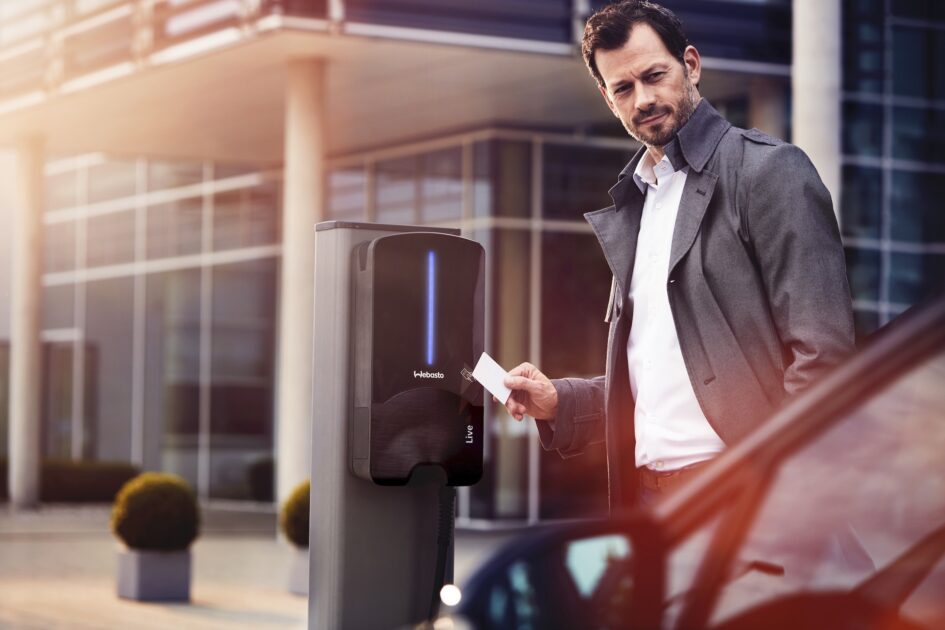Since the start of 2021, many major blue-chip companies have put very firm markers in the sand as they make head roads into their sustainability targets. Coca-Cola European Partners has stated that it will electrify its fleet by 2030, all 8,000 cars and vans, and that this is an important milestone in achieving its net zero emissions by 2040.
Similarly, Amazon in the UK has begun to put in the infrastructure to transform its fleet; over 100 Mercedes-Benz vans were unveiled at its Wembley depot just a few weeks ago.
More companies are also pledging to join them through EV100, a global initiative by The Climate Group which is bringing together forward-looking companies committed to accelerating the transition to electric vehicles (EVs) and make electric transport ‘the new normal’ by 2030. Companies that have already joined include Tusker, Rentokil Initial, Ovo, Tarmac and Drover. Lex Autolease has also stated that it will achieve net zero across its customer fleet by 2030 and will also achieve this with the entire Lloyds Banking Group fleet by the same date.
With the momentum growing the call for others to follow suit is getting ever louder.
What companies need to do
So, you’ve decided that this is the next investment for your company and that now is the time to make a clear CSR statement to your customers, staff and overall brand reputation. However, what do you need to do to facilitate this transition?
Perhaps the most significant thing is to ensure there is a charging infrastructure available to ensure the fleet is always ready to go and has maximum charge. This will enable the transition to be seamless and will also save considerably on fuel bills generated. In addition, if employees have their own electric vehicles, arrangements can be made for them to access the system too, highlighting the commitment of the company to EV motoring across all aspects.
To allow the charging of multiple vehicles simultaneously, the Webasto Live system is ideally suited. It can have up to 250 points and enables not only simple charging but also other smart functionalities such as backend connectivity, local load management and integration into energy management systems. Furthermore, the network can be made secure to prevent non-employees from accessing the facility.
Safe, efficient and responsible
The system offers excellent safety and efficiency credentials, and this is achieved through Dynamic Load Management. This not only saves money but also helps avoid peak loads and thus power outages.
The total available power is adapted to the building’s power consumption and the charging capacity is intelligently distributed to the connected electric cars. It offers an easy set up and control by using the Webasto Live configuration interface and gives great flexibility when adding more charging points as each charging station can be configured as a master or slave.
By specifying such a tailor-made system all electric car and van drivers within the company can enjoy the benefits of charging whilst in the office or depot. It can help to ensure that vehicles are always fully charged and allow tasks to be carried out more efficiently when away from the depot, instead of staff having to pause in their days to use public charging stations. Similarly, private electric vehicle owners will be able to charge whilst they are at work eliminating any range anxiety and allowing them to travel home after work in confidence.
Installing a charging system at every workplace will become the norm over the next few years; why not get ahead of the curve and make a bold statement towards the vision and CSR of your business now.
Webasto Live
Key facts at a glance:
- Efficient use of available energy and distribution between the charging stations
- Central control of up to 250 EV charging points
- Phase-accurate control: automatic phase detection at the start of the charging process
- Avoiding peak energy loads prevents high costs
- Interfaces for connecting external meters
- Numerous safety features such as overload protection and delayed switching on the charging station following a power failure
- Convenient assignment of master and slave charging points using the configuration interface Flexibility when adding more charging points as each charging station can be configured as a master or slave
For further information about Webasto products and their integration into the EV market visit https://charging.webasto.com/en-uk/everything-ev/


Leave a Reply
You must be logged in to post a comment.